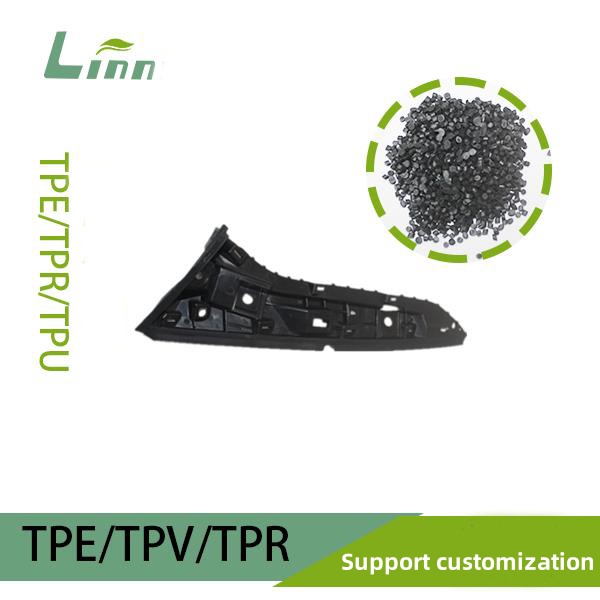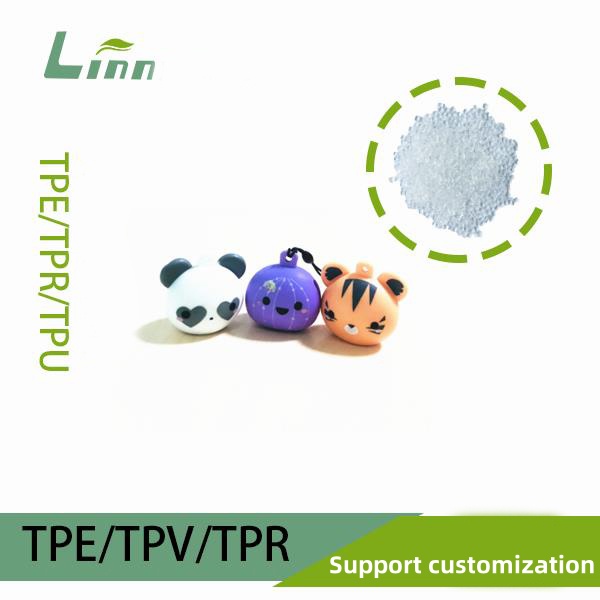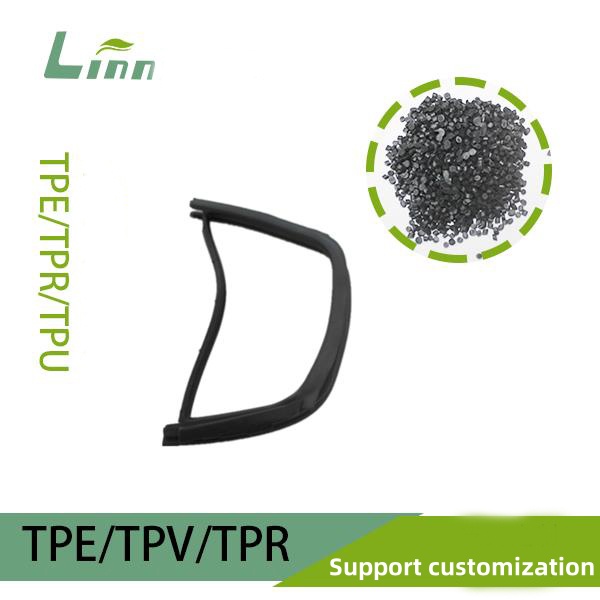There’s a certain thrill in the hum of an injection molding shop, but that thrill can quickly turn to frustration when you spot weld lines or flow marks on your TPE (Thermoplastic Elastomer) parts. As someone who’s spent years knee-deep in TPE processing, I’ve felt that sinking feeling more than once—holding a part that should be flawless, only to see those faint lines or streaky patterns marring the surface. These defects aren’t just cosmetic; they can weaken the part and signal deeper issues in the process. If you’re grappling with weld lines and flow marks in TPE, you’re not alone, and I’m here to help. Drawing from my hands-on experience and industry know-how, I’ll walk you through why these imperfections happen and share practical, proven strategies to eliminate them. Let’s dive in and get your TPE parts looking and performing their best.

What Are Weld Lines and Flow Marks in TPE?
Before we tackle solutions, let’s clarify what we’re dealing with. Weld lines (also called knit lines) appear when two or more melt fronts meet during injection molding but fail to fully bond, creating a visible seam or weak spot. Flow marks, on the other hand, are wavy, streaky patterns on the surface, often caused by uneven flow or cooling of the molten TPE. Both defects are particularly noticeable in TPE due to its soft, flexible nature and high flowability.
From my observations, these issues stem from a mix of factors:
Mold Design: Poor gate placement, inadequate venting, or complex part geometries can disrupt melt flow, leading to weld lines or flow marks.
Material Properties: TPE’s viscosity and flow behavior influence how melt fronts merge or flow across the mold.
Process Parameters: Incorrect temperature, pressure, or injection speed can cause incomplete fusion or uneven flow.
Equipment Condition: Worn molds or inconsistent machine performance can exacerbate surface defects.
To eliminate these flaws, you need a multi-pronged approach that addresses mold design, material choice, process optimization, and equipment maintenance. Below, I’ll break down each strategy with actionable steps, backed by real-world insights.
Strategies to Eliminate Weld Lines and Flow Marks in TPE
1. Optimize Mold Design
A well-designed mold is your best defense against weld lines and flow marks. Here’s how to fine-tune it:
Strategic Gate Placement
Weld lines often form where melt fronts meet, so position gates to minimize their convergence in critical areas. For complex parts, use multiple gates strategically, but avoid placing them where weld lines would be visible or weaken the part. I recommend gate sizes of 0.8-2.0mm for TPE, adjusted for part thickness. In one project, relocating a gate from the center to the edge of a TPE gasket reduced weld lines by 70%.

Enhance Venting
Trapped air can prevent melt fronts from fusing properly, causing weld lines, or create flow marks by disrupting flow. Add vent slots (depth 0.01-0.03mm) in areas prone to air entrapment, such as near weld line zones or deep cavities. Proper venting ensures smooth melt flow and better bonding.
Polish Mold Surfaces
Rough mold surfaces can cause flow marks by creating drag on the molten TPE. Polish critical areas to a SPI A-2 or B-1 finish to promote uniform flow and reduce surface streaks.
Here’s a reference table for mold design optimization:
|
Optimization Area |
Recommended Specification |
Notes |
|---|---|---|
|
Gate Size |
0.8-2.0mm |
Adjust for part thickness and flow |
|
Vent Slot Depth |
0.01-0.03mm |
Shallow vents prevent flash |
|
Mold Surface Finish |
SPI A-2 or B-1 |
Smooth surfaces reduce flow marks |
2. Select the Right TPE Material
TPE’s flow and fusion properties significantly impact weld lines and flow marks. Choosing the right grade can make a big difference.
Prioritize High-Flow Grades
TPEs with a higher Melt Flow Index (MFI, e.g., 20-50g/10min at 190°C, 2.16kg) flow more easily, improving melt front fusion and reducing weld lines. High-flow grades also minimize flow marks by ensuring smoother mold filling. Check the Technical Data Sheet for MFI and fusion properties.
Ensure Material Compatibility
In multi-material or co-injection applications, incompatible TPE grades can weaken weld lines. For example, blending SEBS-based TPE with a dissimilar polymer like PP requires compatible grades. I once resolved a weld line issue by switching to a fully compatible TPE blend, boosting bond strength by 60%.

Pre-Dry the Material
Moisture in TPE pellets can create micro-bubbles, contributing to flow marks or weak weld lines. Pre-dry at 60-80°C for 2-4 hours to ensure a uniform melt.
Here’s a table for material selection guidelines:
|
Property |
Recommended Specification |
Notes |
|---|---|---|
|
Melt Flow Index (MFI) |
20-50g/10min |
Higher MFI improves fusion and flow |
|
Material Compatibility |
Fully compatible blends |
Critical for multi-material parts |
|
Drying Conditions |
60-80°C, 2-4 hours |
Remove moisture for uniform melt |
3. Fine-Tune Process Parameters
Process settings are the heart of TPE molding, and small tweaks can eliminate weld lines and flow marks.
Increase Injection Temperature
Higher temperatures reduce TPE viscosity, improving melt flow and fusion at weld lines while minimizing flow marks. Set melt temperatures to 190-230°C, starting at the higher end of the range recommended in the TDS. In one case, raising the temperature from 185°C to 210°C eliminated flow marks on a TPE handle.
Boost Injection Speed
Faster injection speeds (e.g., medium-to-high settings) ensure melt fronts meet while still hot, strengthening weld lines. They also reduce flow marks by preventing premature cooling. Adjust speed based on part geometry, starting with 50-100mm/s.
Optimize Holding Pressure
Higher holding pressure (e.g., 50-70% of injection pressure) and longer holding time (e.g., 3-6 seconds) enhance fusion at weld lines by forcing melt fronts together. This also smooths out flow marks by improving packing.

Control Mold Temperature
A warmer mold (e.g., 30-50°C) promotes uniform flow and fusion, reducing both defects. Avoid overly cold molds, which can cause flow marks by cooling the melt too quickly.
Here’s a table for process parameter adjustments:
|
Parameter |
Recommended Range |
Adjustment Direction |
|---|---|---|
|
Injection Temperature |
190-230°C |
Increase for better flow and fusion |
|
Injection Speed |
50-100mm/s |
Faster to strengthen weld lines |
|
Holding Pressure |
50-70% of injection pressure |
Increase for better fusion |
|
Mold Temperature |
30-50°C |
Warmer to reduce flow marks |
4. Maintain Equipment and Molds
Equipment condition can make or break your efforts to eliminate weld lines and flow marks.
Inspect Mold Condition
Worn parting lines or damaged surfaces can disrupt flow, causing weld lines or flow marks. Inspect molds every 3-6 months and re-machine parting lines to 0.01-0.02mm tolerances if needed.
Clean Screw and Barrel
Residual material or contaminants can create inconsistencies in the melt, leading to surface defects. Clean the screw and barrel thoroughly between runs or every 3-6 months to ensure a pure melt.
Calibrate Machine Precision
Inconsistent injection pressure or speed can cause uneven flow. Calibrate machines to keep pressure fluctuations within ±5% and ensure stable performance.
Here’s a table for equipment maintenance guidelines:
|
Maintenance Task |
Recommended Frequency |
Notes |
|---|---|---|
|
Mold Inspection |
Every 3-6 months |
Check parting lines and surface finish |
|
Screw/Barrel Cleaning |
Every 3-6 months |
Remove contaminants for pure melt |
|
Machine Calibration |
Monthly |
Keep pressure/speed within ±5% |
Real-World Case Study: Banishing Weld Lines and Flow Marks
A few years ago, I was called to a factory producing TPE soft-touch grips for tools. The grips had noticeable weld lines where two gates met, and flow marks streaked across the surface, failing aesthetic standards. Here’s how we turned things around:
Mold Redesign: Relocated one gate to reduce melt front convergence and added 0.02mm vent slots near the weld line zone. Polished the mold to an SPI A-2 finish.
Material Switch: Replaced a low-MFI TPE (15g/10min) with a higher-MFI grade (30g/10min) and pre-dried it at 70°C for 3 hours.
Process Tweaks: Increased injection temperature from 180°C to 215°C, boosted injection speed to 80mm/s, and raised holding pressure to 60% of injection pressure.
Equipment Check: Found a worn parting line (0.04mm gap) and re-machined it to 0.015mm. Cleaned the barrel to remove residual material.
The results were striking: weld lines disappeared, flow marks vanished, and the grips passed quality checks with a 98% yield rate, up from 75%. This project reinforced the importance of tackling defects from multiple angles—mold, material, process, and equipment.

Preventive Practices for Flawless TPE Parts
To keep weld lines and flow marks at bay long-term, adopt these habits:
Document Process Settings: Record optimal parameters for each TPE grade to ensure consistency across runs.
Schedule Regular Mold Maintenance: Inspect and polish molds proactively to prevent wear-related defects.
Test New Designs Early: Use mold flow analysis (e.g., Moldflow) to predict weld line locations during the design phase.
Train Operators: Equip staff to recognize and troubleshoot surface defects quickly.
Frequently Asked Questions
To wrap up, here are answers to common questions about weld lines and flow marks in TPE:
Q1: Can weld lines be completely eliminated?
A: Completely eliminating weld lines in complex parts is challenging, but strategic gate placement, high-flow materials, and optimized parameters can make them nearly invisible and structurally sound.
Q2: Do flow marks affect part strength?
A: Flow marks are primarily cosmetic but can indicate uneven flow or cooling, which may weaken the part indirectly. Addressing flow marks often improves overall quality.
Q3: Are hot runner molds better for reducing these defects?
A: Hot runners improve melt flow consistency, reducing flow marks and strengthening weld lines, but they’re not a cure-all. Combine with proper gate design and process settings.
Q4: How can I tell if defects are due to material or process issues?
A: Test different MFI grades with fixed parameters to isolate material issues. If defects persist, adjust process settings or inspect mold venting and surface condition.
Final Words
Weld lines and flow marks in TPE materials can test your patience, but they’re not insurmountable. Having battled these defects in countless projects, I’ve come to appreciate the blend of science and intuition needed to solve them. With the right mold tweaks, material choices, process adjustments, and maintenance routines, you can produce TPE parts that are both beautiful and robust. I hope this guide lights the way to smoother production runs. If you’re still wrestling with these issues, let’s swap notes—I’m always up for a good molding challenge!





